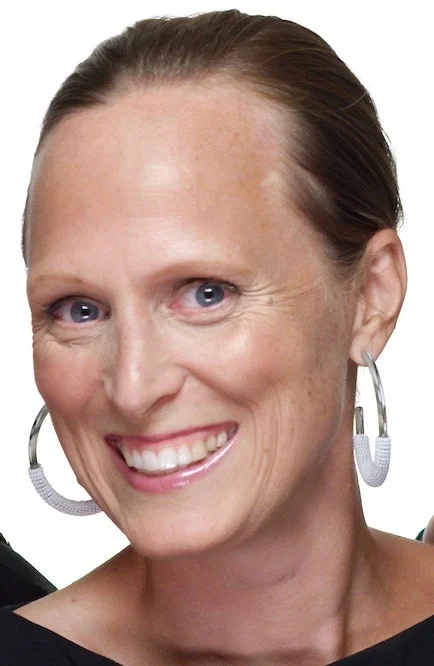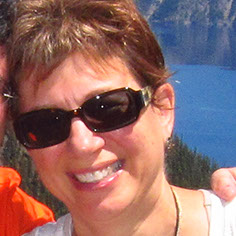This is a story about the value of writing and how it sustained me throughout my treatment for an aggressive cancer.
In 2016, my annual physical exam detected low white blood cell counts. My doctor referred me to a hematologist who recommended a bone marrow biopsy. The biopsy discovered acute myeloid leukemia and triggered immediate hospitalization. In forty-eight hours, I went from feeling fine to intensive treatment for a lethal disease.
The same day I began chemotherapy my wife was admitted to my hospital with a fractured femur. After preparing for and recovering from surgery, she transferred to a transitional care unit for a month-long rehabilitation. Meanwhile, I had a five-week hospital stay to treat infections arising from chemotherapy-induced immunosuppression.
I proceeded through induction chemotherapy, consolidation chemotherapy, and a successful cord blood transplant. I’m now over three years out from my initial diagnosis and final treatment, and I remain cancer-free.
While doctors treated my body, several strategies sustained my identity. Although I was retiring from my role as a professional sociologist, my identity as a writer making sense of my social and personal worlds was crucial throughout my odyssey. My identity-sustaining strategies included mindfulness practices, physical activity, a pro-active attitude to my illness, unrelenting humor, and a secular worldview. But my most valuable strategy was writing my story.
It started simply enough during my first week of hospitalization when I realized we needed a way to keep folks informed about our situation. People suggested a Caring Bridge site with updates for all to see. However, announcing to the world that our home would be unoccupied for a month or more seemed unwise.
Instead, I sent an email to neighbors asking them to collect our mail and keep an eye on our house. I quickly realized that emails were an efficient way to keep everyone informed. I eventually sent over sixty reports to more than fifty recipients. These missives combined medical updates and progress reports with reflections on being a cancer patient and the often mysterious and frightening world of cancer care.
These reports were composed for a known audience. I was highly conscious that I was writing for others and included some humor to lighten the impact of my otherwise dire news. One of the great benefits of writing for others was the supportive feedback I received from my correspondents.
It eventually dawned on me that these cumulative reports had become a kind of cancer memoir. On a more profound level, it also occurred to me that I was writing for and to myself.
Each day in the hospital brought a new, dizzying array of personnel, medications, tests, scans, side-effects, cautions, and complications. While I received excellent care, it was an overwhelming initiation into the world of cancer treatment that left me feeling highly vulnerable and utterly dependent on the care of strangers.
The best way I could make sense of it was to write about it. Writing became my therapy. It allowed me to take the chaotic threads of my daily experience and weave them into a coherent narrative of what was happening to me.
My writing translated swirling emotions and unpredictable circumstances into a narrative that tamed my fears and preserved my identity. At a time when there wasn’t much I could control, telling my story made me the author of my own life. In short, writing became a psychic survival mechanism.
Late in the process, I decided to share my story more broadly. With the addition of a preface on lessons learned and an epilogue on identity changes, my memoir appeared from Written Dreams Publishing in December 2018.
As I was preparing my book for publication, I read the Canadian sociologist Arthur Frank’s book on The Wounded Storyteller. His work retrospectively overlaid a whole new level of insight into my narrative and how patients can retain their personhood in the face of life-threatening illness and technically driven treatment.
Frank claims that storytelling by ill persons can play a crucial role in shifting them from a passive to an active role in their illness. While doctors may ensure our survival, telling our story can maintain our identity. Put differently, while people surrender their bodies to medicine, they retain their self by telling their story. Storytelling thereby rescues patients from the medical colonization that would otherwise reduce them to passive patients in an asymmetrical power relationship.
Frank describes three types of stories that emerge out of illness. The first, restitution narratives, say “I was healthy, then I was sick, now I am (becoming) healthy again.” Here, the patient’s body is analogous to a broken-down car, the physician is an able mechanic, and the patient is a passive bystander drinking bad coffee in the shop’s waiting room.
Patients eventually get better in a restitution story, but it remains one in which an active physician restores the sick body of a passive self. Restitution stories are the medically and culturally approved way we think about illness: when something is broken, we get it fixed and move on. They nonetheless leave something important out of the picture as the person is reduced to a body needing repairs and the self is sidelined by the doctor’s expertise.
The coherence of restitution stories is lacking in the second type of narrative: chaos stories. Without narrative order, coherent sequence, or discernible causality, they carry no expectation of recovery or illusion of control. These stories are threatening to the patient, but also to physicians because they are an implicit critique of their limited ability to fix things.
By their nature, chaos stories cannot be told as much as simply experienced by ill persons as overwhelming. They can overtake any sense of a coherent self and an orderly world for a patient. Despite the patient’s sense of helplessness and the physician’s dislike for such stories, they must be acknowledged before the patient can reclaim their personhood.
The final type, quest stories, are the only ones in which the teller assumes center stage. Here, the patient accepts their illness and uses it to try to gain insight from their experience. Such stories involve a recursive journey; the patient takes a trip in order to discover what kind of trip it is, and then finds meaning that can be passed on to others.
There is heroism in quest stories; it isn’t the physician vanquishing disease but rather the patient persevering through suffering. As people become wounded storytellers, they derive meaning from telling their illness. Through quest stories, people become not just survivors but witnesses with a responsibility to share their stories.
As I digested Frank’s ideas, I realized I had become a wounded storyteller and that all three types of storytelling had appeared in my own accounts.
My odyssey began as a chaos story. Upon my hospital admission, I had no clear understanding or sense of control over what was happening to me or my spouse. But wait, there’s more: three weeks into our mutual incapacitation, a nasty storm brought down two sixty-foot trees onto the roof, deck, and gutters of our unoccupied home. It just seemed like anything could (and did) happen. My fractured impressions nicely fit Frank’s description of chaos stories as proceeding through multiple, destabilizing events linked only by the phrase “and then” repeated over and over.
Shortly thereafter, my reports changed as I learned more about my disease, my short-term treatment, and the long-term options for further treatment. In effect, my doctors were telling me a restitution story about how I had been healthy, then became sick, and now will get better. While my doctors and treatment provided the data points for this story, I played an active role by narrating it. But in order to convey my experience to others, I had to comprehend it myself. My readers became the prod for my own self-understanding, as writing-for-others seamlessly became therapy-for-me and a means of maintaining a coherent self
The next turn in my narrative occurred after my day 180 consultation. I was six months out from my transplant and had tapered off my anti-rejection medication and its unwelcome side-effects. That turning point sparked a qualitative shift in my mindset. For the first time, I was able to accept that I had weathered my treatments, that they had been successful, and that I was actually better. I then described my mood as serene euphoria, but it came with a powerful urge to reach out and share my story.
I now see this period as the beginning of a quest story. As I have reached out through my memoir, support groups, peer counseling, speaking engagements, writing workshops, fund-raising events, and survivorship conferences, I have met the responsibility to share my story and forge new connections with other members of the cancer community.
My most meaningful, current activity is being a peer volunteer meeting with current transplant patients. Our common bond of transplant fosters profoundly personal conversations between complete strangers as we share our stories. In so doing, we broaden the circle of people who become authors of their own lives and join the community of wounded storytellers.
Steve Buechler is a retired sociologist. His memoir is titled How Steve Became Ralph: A Cancer/Stem Cell Odyssey (with Jokes). More information on his book and activities is at www.stevebuechlerauthor.com. You can also find a brief interview with Steve at https://www.youtube.com/watch?v=IUfYUImyhJU.






























